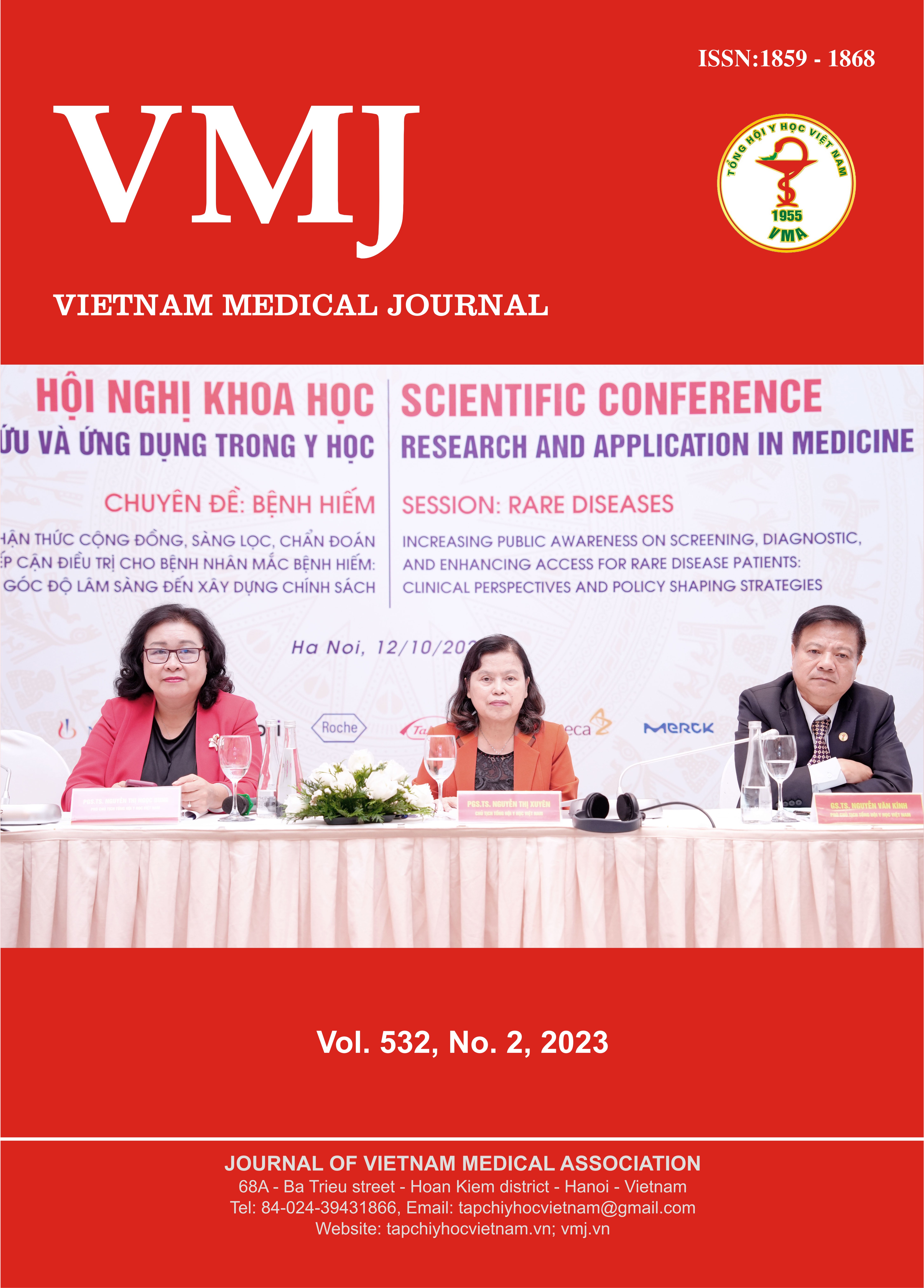IMAGING CHARACTERISTICS AND PREDICTIVE FACTORS OF COMPLICATED GASTROINTESTINAL FOREIGN BODIES IN COMPUTED TOMOGRAPHY
Main Article Content
Abstract
Background: Gastrointestinal foreign body is a frequently encountered problem in daily practice at the Emergency Department. The majority of gastrointestinal foreign bodies will pass spontaneously, but in several cases, severe or even fatal complications can happen. X-rays, endoscopy, and computed tomography are the most common imaging modalities to diagnose gastrointestinal foreign bodies. Method: In our study, twenty-five patients who were diagnosed by CT and treated for gastrointestinal foreign bodies were reviewed retrospectively. The predictive risk factors for complications after foreign body ingestion or insertion were analyzed by multivariate logistic regression, including age, sex, type of gastrointestinal foreign body, and imaging characteristics in CT (location, size, thickening and enhancing bowel wall, fat infiltration, collection, and free gas). Results: All foreign bodies were sharp-pointed, and the average length was 30.56 ± 10.03 mm (11-54 mm). Bones accounted for 64% of cases, toothpicks followed with 16%. The most common location for foreign bodies in digestive tract was the small intestine, followed by the stomach, esophagus, and colon. Thickening and enhancing bowel wall, fat infiltration were both seen in most cases of 84%. Transmural foreign bodies accounted for 56% and perforation, abscess were more frequent complications with 64%, and 16% of cases, respectively. Multivariate analysis showed that size (p < 0.014) and type (p < 0.035) were significant independent risk factors associated with the development of complications in patients with gastrointestinal foreign bodies. Conclusion: CT plays a crucial role in the detection and diagnosis of gastrointestinal foreign bodies and its complications. In patients with gastrointestinal foreign bodies, the risk of complications was increased with bone type and larger size of foreign bodies.
Article Details
Keywords
gastrointestinal foreign bodies, foreign bodies, complications of foreign bodies, sharp-pointed foreign bodies, ingested foreign bodies.
References
2. Ikenberry SO, Jue TL, Anderson MA, et al. Management of gastrointestinal foreign bodies and food impactions. Gastrointest Endosc. 2011;73(6):1085-1091. doi:10.1016/j.gie.2010.11.010
3. Schwartz JT, Graham DY. Toothpick perforation of the intestines. Ann Surg. 1977;185(1):64-66.
4. Loh WS, Eu DKC, Loh SRH, Chao SS. Efficacy of computed tomographic scans in the evaluation of patients with esophageal foreign bodies. Ann Otol Rhinol Laryngol. 2012;121(10):678-681. doi:10.1177/000348941212101010
5. Ngan JH, Fok PJ, Lai EC, Branicki FJ, Wong J. A prospective study on fish bone ingestion. Experience of 358 patients. Ann Surg. 1990;211(4):459-462. doi:10.1097/00000658-199004000-00012
6. Evans RM, Ahuja A, Rhys Williams S, Van Hasselt CA. The lateral neck radiograph in suspected impacted fish bones--does it have a role? Clin Radiol. 1992;46(2):121-123. doi:10.1016/s0009-9260(05)80316-2
7. Marco De Lucas E, Sádaba P, Lastra García-Barón P, et al. Value of helical computed tomography in the management of upper esophageal foreign bodies. Acta Radiol Stockh Swed 1987. 2004;45(4):369-374. doi:10.1080/02841850410005516
8. Okan İ, Akbaş A, Küpeli M, et al. Management of foreign body ingestion and food impaction in adults: A cross-sectional study. Ulus Travma Ve Acil Cerrahi Derg Turk J Trauma Emerg Surg TJTES. 2019;25(2):159-166. doi:10.5505/tjtes.2018.67240
9. Kim SI, Lee KM, Choi YH, Lee DH. Predictive parameters of retained foreign body presence after foreign body swallowing. Am J Emerg Med. 2017;35(8):1090-1094. doi:10.1016/j.ajem.2017.03.002
10. Sung SH, Jeon SW, Son HS, et al. Factors predictive of risk for complications in patients with oesophageal foreign bodies. Dig Liver Dis Off J Ital Soc Gastroenterol Ital Assoc Study Liver. 2011;43(8):632-635. doi:10.1016/j.dld.2011.02.018
11. Chiu YH, Hou SK, Chen SC, et al. Diagnosis and endoscopic management of upper gastrointestinal foreign bodies. Am J Med Sci. 2012;343(3):192-195. doi:10.1097/MAJ.0b013e3182263035
12. Toumi O, Ammar H, Ghdira A, Chhaidar A, Trimech W, Gupta R, Salem R, Saad J, Korbi I, Nasr M, Noomen F, Golli M, Zouari K. Pelvic abscess complicating sigmoid colon perforation by migrating intrauterine device: A case report and review of the literature. Int J Surg Case Rep. 2018;42:60-63. doi: 10.1016/j.ijscr.2017.10.038.
13. Hong KH, Kim YJ, Kim JH, Chun SW, Kim HM, Cho JH. Risk factors for complications associated with upper gastrointestinal foreign bodies. World J Gastroenterol WJG. 2015;21(26):8125-8131. doi:10.3748/wjg.v21.i26.8125
14. Yu M, Li K, Zhou S, et al. Endoscopic Removal of Sharp-Pointed Foreign Bodies with Both Sides Embedded into the Duodenal Wall in Adults: A Retrospective Cohort Study. Int J Gen Med. 2021;14:9361-9369. doi:10.2147/IJGM.S338643
15. Roura J, Morelló A, Comas J, Ferrán F, Colomé M, Traserra J. Esophageal foreign bodies in adults. ORL J Oto-Rhino-Laryngol Its Relat Spec. 1990;52(1):51-56. doi:10.1159/000276103
16. Shao F, Shen N, Hong Z, Chen X, Lin X. Injuries due to foreign body ingestion and insertion in children: 10 years of experience at a single institution. J Paediatr Child Health. 2020;56(4):537-541. doi:10.1111/jpc.14677


